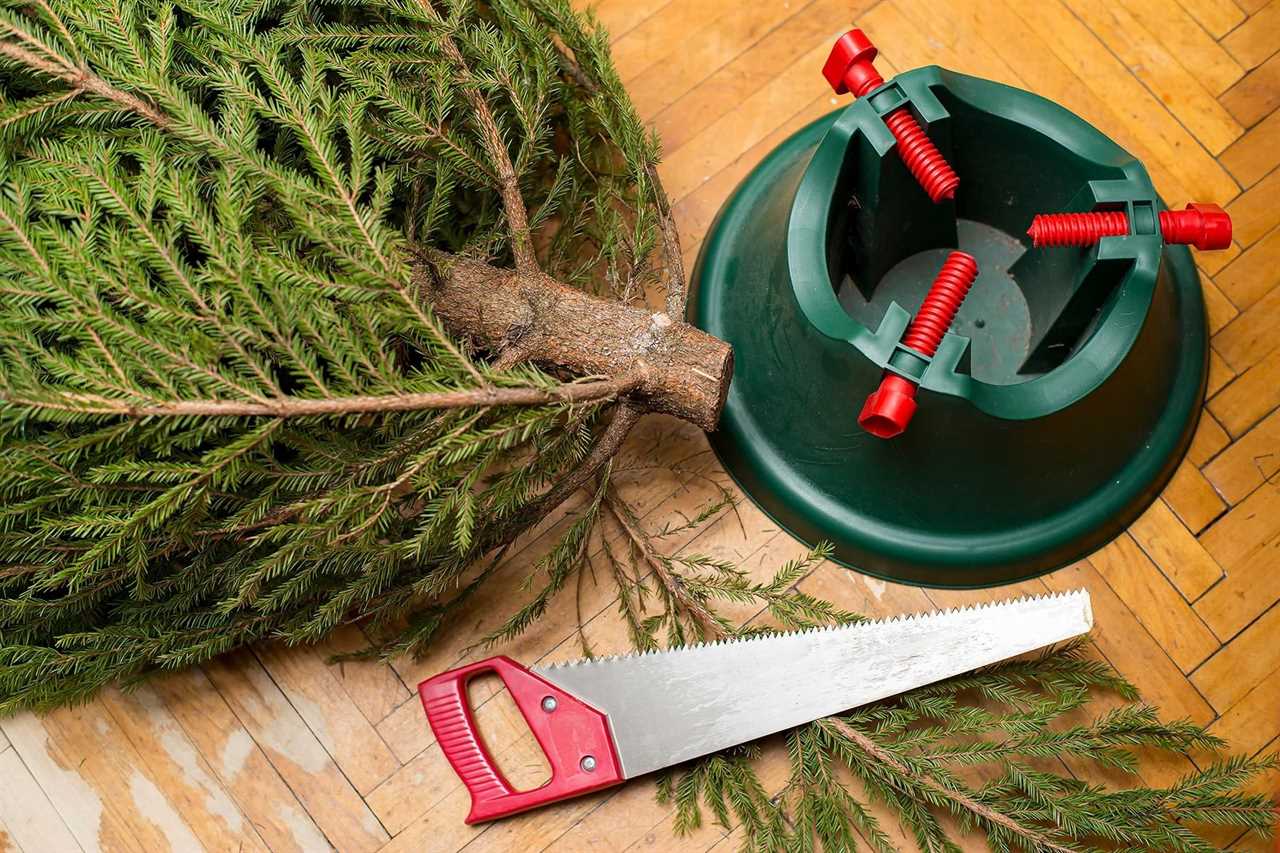There’s nothing more disappointing than a Christmas tree that doesn’t make it through the season. Most last indoors for about a month before the actual holiday and two weeks after, but the exact length depends on a variety of factors.
We spoke with several Christmas tree experts who offered the following tips on increasing the longevity of your tree this holiday season.
Visit a Reputable Vendor
Where and how a Christmas tree is grown can affect how long it lasts. Purchase yours from a reputable business known for selling quality trees.
Greg Walsh of Greg’s Trees in New York City buys his trees directly from growers and visits all their farms. “Watch out for secondary markets because you don’t know how fresh the trees are and when they were cut,” he says. “It’s best to deal with a local place, not big box stores that typically cut trees early in October.”
He also looks for the greenest growers who don’t use pesticides. Don’t hesitate to ask the tree seller where the trees came from and when they were harvested.
Choose the Right Type of Tree
The tree species you pick can affect how long it lives.
Fraser firs last the longest, with some surviving up to two months, according to Walsh. They also have a lovely scent and strong branches to hold ornaments.
Douglas firs and balsam firs also offer good longevity due to their strong branches. On the other hand, white pine trees and scotch pine trees tend to shed their needles faster.
Choose the Freshest Tree
Going directly to the source is a great way to ensure you take home a long-lasting tree.
“If you have the ability to go visit a local Christmas tree farm, that will hands down be the freshest tree possible because you cut it yourself that day,” says Jesse Jimerson of Piper Mountain Christmas Tree Farm in Maine. “We operate a choose-and-cut tree farm where families get a saw and go hike amongst our 30-plus acres of Christmas tree fields to find their perfect tree.”
If you purchase a tree at a lot, you can still check the freshness. The needles should be dark green versus pale olive-colored, which indicates dryness.
Karen Musgrave of Hicks Nurseries in Westbury, New York, suggests running your hands over the branches and shaking the tree a bit. “If few needles fall off, the tree is likely fresh,” he says. “If many needles fall off, the tree may be too dry and won’t last.”
She also suggested lifting up the tree. If it feels light, it may already be dried out. Finally, Walsh says to look at the bottom of the tree and the stump to make sure it isn’t too dark. A fresh-cut tree will look lighter and fresh, but a dark, black stump is a bad sign.
Transport It Home Safely
Be careful on the ride home, because any damage can reduce the amount of time the tree lives.
“When transporting the tree, try not to expose it to heavy wind, like on the roof of a car or in the back of a pickup truck,” says Joseph Demkovich, Sr., a certified tree safety expert and director of franchise operations and safety at Monster Tree Service. “This can accelerate the drying process.”
If you must bring it home on a car roof or in a pickup truck bed, wrap it with a tarp or similar covering.
Prep the Tree Properly

After purchasing your tree, cut one to two inches off the bottom to open it up and trim away stray branches.
“If you’re not able to put the tree up right away, leave it in a cool, shaded area outdoors in a bucket of water,” Musgrave says. “Live trees are like cut flowers, they need to be kept in water to survive.”
Set It Up in a Safe Spot
Avoid setting up your tree near a heat source like a fireplace, heater, heating vents or radiator because that will quickly dry it out. Jimerson even recommends running a humidifier near your tree if you live in an extremely dry climate.
“Make sure your Christmas tree is properly installed in a sturdy stand that can hold plenty of water,” Musgrave says. And don’t put it in front of a window. Besides blocking natural light and heat from entering the home, it can dry out your tree prematurely.
Keep It Watered
A tree can’t survive without adequate water. Once you bring it home, place it in a tree stand with a large water capacity and water it immediately. Proper hydration maintains needle moisture and the freshness of your tree. A six-foot tree will need about one gallon of water every other day.
“The tree drinks a lot of water during the first day or two,” said Walsh. “If you forget about the water, it will dry up and the tree will close off.” He suggested using Christmas Tree Preserver, a product you pour into the water to turn it into a gel that lasts about a month. This keeps the tree well-hydrated.
Decorate It With Care
Your decorations can also affect how long your tree lasts. Walsh warns against decorating it too quickly. “Once the tree is in the stand,” he says, “leave it alone for a day and let it settle before decorating because the lights can pull on the branches if decorated too early.”
Also, it’s important to decorate the tree with lights rated for indoor use that don’t create too much heat. LED lights are best. If you have heavy ornaments, pick a tree with sturdy branches.
Did you miss our previous article...
https://rsssuperfeeds.com/life-hacks/plant-crocus-in-your-lawn-in-the-fall-to-get-spring-flowers






